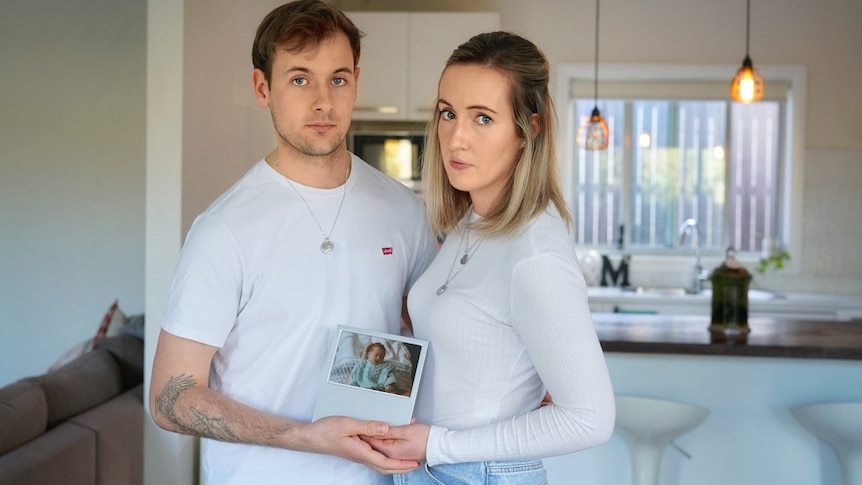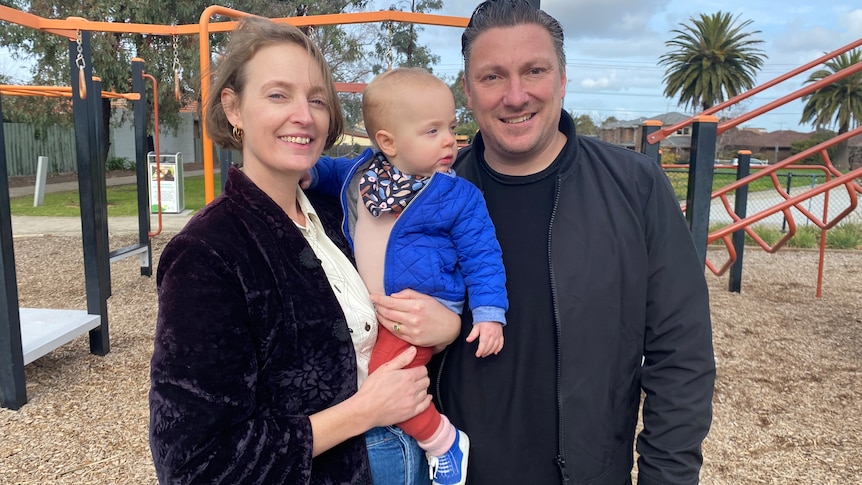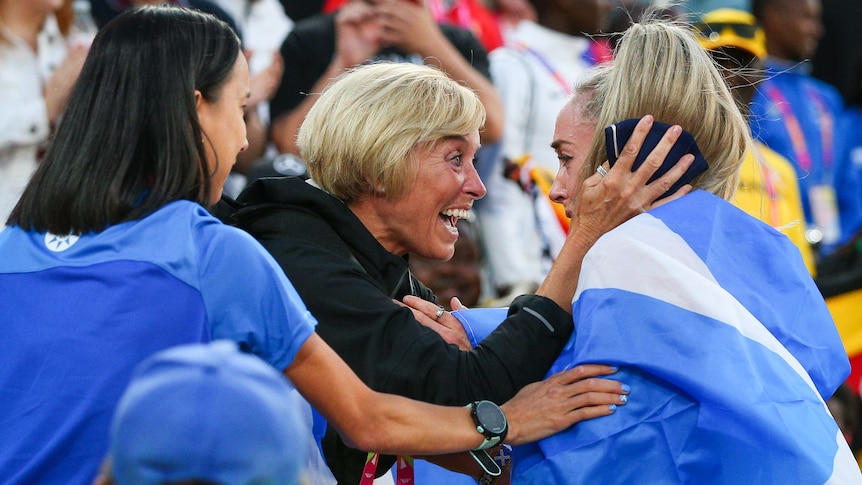Dimity Blundell was 35 weeks pregnant with her son, Finley, when she was suddenly woken up in the middle of the night by her cat.
Warning: This story discusses stillbirths and contains photos and other content that may be distressing to some people.
“I used the bathroom and started bleeding, a lot,” she said.
Dimity, and her husband Michael, rushed to hospital, where doctors told them the news no parents want to hear: “we can’t find a heartbeat.”
Dimity had had a placental abruption, a rare but serious pregnancy complication where the placenta partly or completely separates from the uterus before delivery.
She was taken into an operating theater at 12:16am on February 22 this year.
“I was prepped by 12:17am, knocked out at 12:18am, the surgery started at 12:19am, and Finley was born at 12:20am,” Dimity said.
Finley was declared dead at 1:24am.
‘Is this the worst day of my life?’
Later that morning, a midwife asked if the grieving couple wanted to meet their son.
Dimity recalled the midwife telling her: “he’s very cute, he really does just look like he’s sleeping.”
Finley spent four days in the loving arms of his parents, and a handful of other family members and friends.
Dimity said she always asks herself, “is the worst day of my life the day he was born, or the day I had to leave him? I think it was the day we had to leave him.”
“Then we came home, and we had a nursery and we had baby things, and then we became the people whose baby died,” she said.
“Everyone else gets to bring their baby home, so why didn’t we?”
Five-and-a half months on, Dimity and Michael said they were taking each day as it came.
But Dimity said Finley’s death “affects every single aspect” of their lives.
“Everything that you do, it’s just woven into the fabric of who you are,” she said.
Michael said it was hard to describe the pain, that still had not gone away, but said it had “certainly gotten a little easier to deal with, with all the counseling and work we’ve put in.”
“It definitely burns less; I’d say it would be a campfire now rather than a bonfire,” Dimity said.
“Moving forward is weird though, because the further forward you move, the further away you get from your baby.”
‘We are the strength of other people, we are the strength of the Red Nose families’
Shortly after Finley’s death, the couple reached out to the charity Red Nose — best known for its annual major fundraiser Red Nose Day, which is today.
Each year, the national charity raises hundreds of thousands of dollars to continue vital research into the causes of stillbirth and sudden infant death and support families impacted by the death of a baby or child.
Through Red Nose’s Canberra branch, Dimity and Michael were able to participate in counselling, and said they discovered a whole community of people who had gone through the same experience as them.
“Once you step into the community, you realize how big it is, and we’re all here for one another,” Michael said.
“The mums and the dads and the siblings of the little people who are with Finley, those people are phenomenal, and they will get you through this,” Dimity said.
“People often tell Michael and I, ‘you’re so strong, you’re so brave’. And I say, ‘No. We are the strength of other people, we are the strength of the Red Nose families.'”
Another member of the Red Nose community in Canberra, is bereaved parent Bonnie Carter, who lost her two daughters, Grace and Matilda, in the span of 18 months.
“It was a very raw, unique pain that I wouldn’t wish on my worst enemy,” she said.
“There’s some sort of pain you cannot describe in words when a baby dies in the comfort of your belly.”
Bonnie is the ACT representative for the Red Nose Community Advisory Committee and said it was important to talk about stillbirth, as the latest statistics showed 3,000 Australian babies died suddenly and unexpectedly each year.
“By the time you roll into bed tonight, nine Australian families will have lost a baby,” she said.
Dimity and Michael said they found “talking about stillbirth took away the stigma.”
“You’re pregnant and you’re carrying a baby and then it dies, and there’s a lot of stigma around, ‘what did you do?'” Dimity said.
“By talking to Red Nose and hearing the different stories, people have a lot more understanding that it does just happen.”
Funds raised to assist research into stillbirth
Current research from Red Nose shows more than 50 per cent of stillbirths, that occur in the last weeks of an otherwise healthy pregnancy, have no known cause.
But Bonnie said she hoped that ongoing research undertaken at Red Nose could ensure “zero babies pass away, and zero little lives are lost.”
She said, until that time came, counseling and community support allowed bereaved parents and families to open up about their experience.
“You need those other parents to lean on, to talk to, to vent to, to cry to, to laugh with,” she said.
“There is a whole community of families, especially in the Canberra region, who get it, who feel your pain, who understand it, and we’re your backbone. You can lean on us whenever you need to.”
Dimity and Michael said, one day, when they were “further down the path” they wanted to join Bonnie and become involved in the Red Nose charity.
“So that other people don’t have to sit in their hospital beds holding their baby and thinking ‘this doesn’t happen to other people,'” Dimity said.
.



